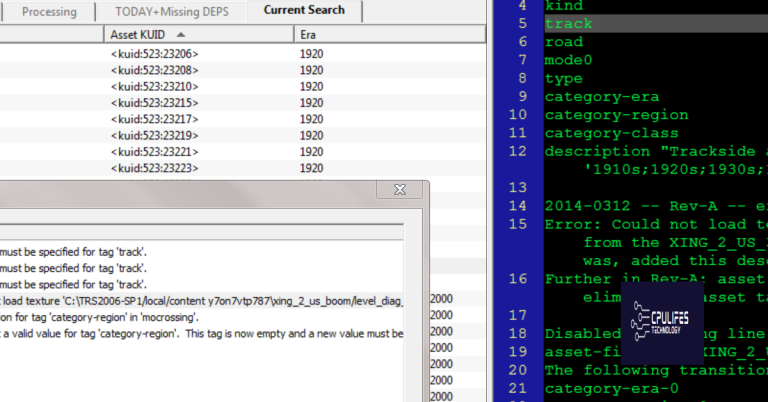Outlook Desktop Notifications Not Working in Windows
As technology advances, the desktop Windows operating system continues to evolve, providing users with new features and improved performance.
Disable Offline Mode and Check In-App Notification Settings
If you’re using Windows 10 or Office 365 on your desktop, you may have noticed that your email notifications are not always consistent. Sometimes, you’ll receive a popup notification for new mail, while other times you won’t. This can be frustrating if you rely on email notifications to stay on top of your messages.
One reason you may not be receiving notifications is because you’re in offline mode. To disable offline mode, click on the “Send/Receive” tab in Outlook 2016 or Outlook Web and uncheck the “Work Offline” option.
If you’re still not receiving notifications after disabling offline mode, check your in-app notification settings. In Outlook 2016, click on “File” > “Options” > “Mail” and make sure “Show an alert” is selected under “Message arrival”. In the Outlook app for Windows or Mac, you can adjust your notification settings in the app’s preferences.
If you’re using a Mac, you may need to adjust your alert settings or disable notifications in the Action Center to receive mail notifications or push notifications for the Outlook app. By following these steps, you’ll be able to stay on top of your email messages and never miss an important email again.
Enable Outlook Notifications in Windows Settings
If you want to stay on top of your emails, enabling Outlook notifications in Windows settings is a great way to do so. With this feature turned on, a popup notification will appear on your screen each time you receive a new email.
To enable Outlook notifications on Windows 10, go to the Start menu and select “Settings.” From there, click on “System” and then “Notifications & actions.” Scroll down until you see “Get notifications from these senders” and toggle the switch next to Outlook to turn notifications on or off.
If you’re using Outlook 2016 or Office 365, you can also adjust your alert settings within the Outlook app itself. Go to the “File” tab, select “Options,” and then click on “Mail.” From there, select “Message arrival” and choose the options you want, such as playing a sound or displaying a new mail alert.
If you’re using a Mac, the process for enabling or disabling notifications is similar. Simply go to the “Outlook” menu, select “Preferences,” and then click on “Notifications.” From there, you can choose to turn off or adjust your mail notification settings.
Turn Off Do Not Disturb and Battery Saver
If you’re experiencing issues with popup notifications or alert settings on your Windows 10 desktop, it may be due to the “Do Not Disturb” or “Battery Saver” settings. These settings can impact the way notifications appear and how frequently your desktop checks for new messages in apps like Outlook Web or Outlook 2016.
To turn off “Do Not Disturb,” go to the Action Center and locate the “Focus Assist” button. Click it and select “Off.”
For “Battery Saver,” navigate to your desktop’s settings and click “System.” Then select “Battery” and turn off “Battery Saver.”
If you’re still experiencing issues with new mail alerts, you may need to adjust your notification settings in Outlook or your mail app. For Office 365 or the Outlook app, go to “Settings” and disable notifications for message arrival.
These steps may differ slightly for Mac Outlook or other operating systems, but with a few clicks, you can disable notifications and get back to a more streamlined desktop experience.
Sub CheckOutlookDesktopNotifications()
Dim olApp As Outlook.Application
Dim olNS As Outlook.NameSpace
Dim olFolder As Outlook.MAPIFolder
Dim olReminders As Outlook.Reminders
Dim olReminder As Outlook.Reminder
Dim ReminderMessage As String
Set olApp = New Outlook.Application
Set olNS = olApp.GetNamespace(“MAPI”)
Set olFolder = olNS.GetDefaultFolder(olFolderInbox)
Set olReminders = olApp.Reminders
For Each olReminder In olReminders
If olReminder.IsVisible Then
ReminderMessage = olReminder.Caption & vbCrLf & olReminder.Text
MsgBox ReminderMessage, vbInformation, “Outlook Reminder”
End If
Next olReminder
Set olReminder = Nothing
Set olReminders = Nothing
Set olFolder = Nothing
Set olNS = Nothing
Set olApp = Nothing
End Sub
This code utilizes the Outlook object model to check for visible reminders in the inbox folder and display them as a message box. This could potentially help users who are experiencing issues with their desktop notifications by providing an alternative way to receive reminders and notifications. However, this code may not necessarily be a comprehensive solution to the problem and may require further modifications and testing to ensure its effectiveness.
Check Outlook Rules and Clear Cache
Outlook is a popular email client that comes with various features and settings to help you manage your emails more efficiently. One of these features is Outlook Rules, which allows you to automate actions based on certain criteria. However, if your rules are not working correctly, it may be time to check them and make sure they are set up correctly.
Clearing the cache is another troubleshooting step that can help you resolve issues with Outlook. The cache stores temporary data that can sometimes become corrupted and cause problems with the app. Clearing it can help improve the performance of Outlook and fix issues with email syncing and message arrival.
To check your Outlook Rules, open the app and go to the Rules and Alerts section. Here, you can view your existing rules and make changes if necessary. To clear the cache, you can go to the File menu and select Options. From there, choose the Advanced tab and click on the Clean Out button under the Cached Exchange Mode Settings. This will delete the cache and help improve the app’s performance.
By following these steps, you can ensure that your Outlook app is running smoothly and efficiently on your Windows desktop.
Update Outlook App and Repair Email Account
Updating your Outlook app is crucial to ensure that it runs smoothly and efficiently. Outdated versions may cause errors and hinder your productivity. You can update your Outlook app on Windows 10 by going to the Microsoft Store and checking for updates.
If you’re having trouble accessing your email account on Outlook, you can try repairing it. Open the app and go to File > Account Settings > Account Settings. Choose the account you want to repair and click Repair.
To make sure you never miss an important email, you can enable new mail alerts on your Outlook app. This can be done on both Windows and Mac versions. Choose from popup notifications or sound alerts. To turn off or disable notifications, go to Action Center on Windows or Alert settings on Mac Outlook.
Another way to receive mail notifications is through push notifications on your Outlook web or mobile app. Make sure you have the latest version of the Outlook app on your device to enjoy this feature. With Office 365, you can receive notifications on your mobile device, even when you’re away from your desktop.
Additionally, if the problem is caused by a miscommunication between hardware and the operating system, Fortect can repair the underlying causes and identify any malfunctioning hardware that may need replacement.
Contact Support for Assistance
If you’re having trouble with your desktop Windows, contact support for assistance. Whether you’re dealing with a technical issue or just need help navigating your computer, our support team is available to help.
Before reaching out, make sure to check your alert settings and action center to see if there are any popup notifications or new mail alerts that might be causing the issue. If you’re using Outlook web or Outlook 2016, you can also adjust your message arrival settings to control how often your email notifications come through.
If you’re using Windows 10 or Office 365, you may be able to receive push notifications through the Outlook app or your Mac Outlook account. If you want to disable notifications altogether, you can do so in your computer’s settings or within the Outlook app itself.
Remember, our support team is here to help if you need it. Don’t hesitate to contact us for assistance with your desktop Windows issues.
Please be aware that there might be an issue with Outlook desktop notifications as they may not be functioning properly. Download this tool to run a scan





